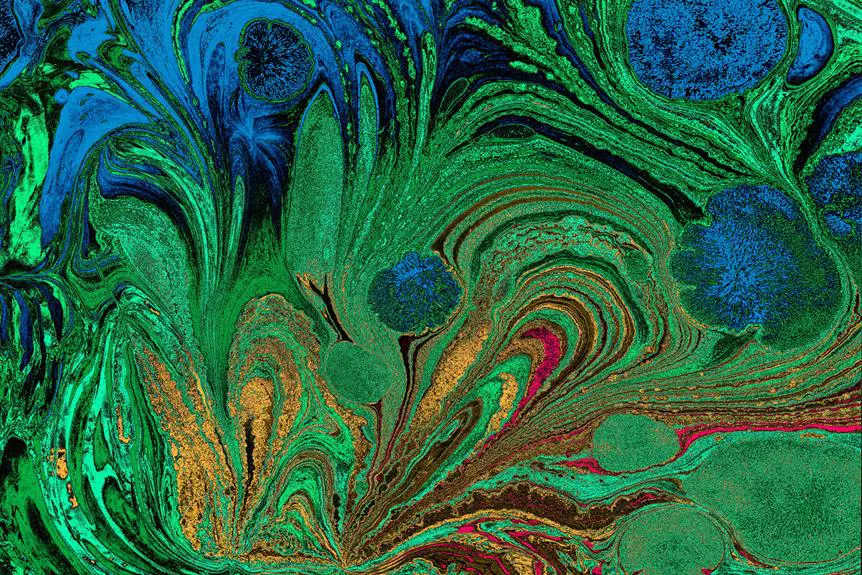Curious about giving your fabrics a vibrant, personalized touch? Can you dye fabrics with acrylic paint? Absolutely!
In this guide, you'll master the art of transforming your fabrics using acrylic paint. We'll delve into understanding acrylic paint as fabric dye, selecting the right fabric and paint, prepping the fabric for dyeing, applying acrylic paint to fabric, and caring for your newly dyed creations.
By the end, you'll have the knowledge and confidence to add a pop of color to your fabric projects using acrylic paint. Let's dive in and explore the exciting world of fabric dyeing with acrylic paint!
Key Takeaways
- Acrylic paint can be used as fabric dye by mixing it with a fabric medium.
- Acrylic paint adheres well to natural fabrics like cotton, silk, and wool.
- Properly preparing the fabric, including washing and drying, ensures better paint adhesion.
- Heat-setting the paint after drying makes it permanent on fabric.
Understanding Acrylic Paint as Fabric Dye
Yes, you can use acrylic paint as a fabric dye if you properly prepare the fabric and mix the paint with a fabric medium. Acrylic paint is a versatile medium known for its ability to adhere to a variety of surfaces, including fabric. When used as a fabric dye, acrylic paint can create vibrant, long-lasting colors on your garments.
One of the key properties of acrylic paint that makes it suitable for fabric dyeing is its flexibility and durability. Once properly heat-set, acrylic paint becomes permanent on fabric, making it ideal for items that will be washed or worn frequently.
When using acrylic paint as a fabric dye, it's essential to understand fabric dyeing techniques. First, it's important to prepare the fabric by washing and drying it to remove any sizing or residues that may interfere with the paint's adhesion. Additionally, mixing the acrylic paint with a fabric medium helps to ensure that the paint remains flexible and won't stiffen the fabric. This allows for a more comfortable and wearable finished product.
Understanding these acrylic paint properties and fabric dyeing techniques will empower you to effectively use acrylic paint as a fabric dye, opening up a world of creative possibilities for customizing your clothing and textiles.
Choosing the Right Fabric and Paint
You can select a variety of fabrics and acrylic paints to achieve the desired color and effect for your fabric dyeing project. When choosing natural fabrics for dyeing with acrylic paint, it's important to consider the properties of both the fabric and the paint to ensure the best results.
| Fabric Type | Properties | Suitable for Dyeing? |
|---|---|---|
| Cotton | Absorbent, breathable, easy to dye | Yes |
| Silk | Smooth, lustrous, takes dye well | Yes |
| Wool | Warm, durable, takes dye differently | Yes |
Acrylic paint works best on natural fabrics such as cotton, silk, and wool. These fabrics readily absorb the paint, allowing for vibrant and long-lasting color. Additionally, the properties of acrylic paint make it a great choice for fabric dyeing. It is quick-drying, water-resistant, and offers a wide range of colors to choose from. When used with the right fabric, acrylic paint can create stunning, permanent designs on your textiles.
Preparing the Fabric for Dyeing
To prepare the fabric for dyeing with acrylic paint, begin by thoroughly washing and drying the fabric to remove any dirt, oils, or finishes that could interfere with the paint's adhesion. This step is crucial for ensuring proper dye absorption and a good bond between the fabric and the paint. When washing the fabric, use a gentle detergent and avoid using any fabric softeners, as they can leave a residue that may hinder the paint from adhering evenly.
Next, consider the surface texture of the fabric. If the fabric is very smooth, you might want to roughen it up slightly with fine-grit sandpaper to improve the paint adhesion. However, if the fabric is already textured, such as canvas or denim, this step may not be necessary.
Additionally, if you're working with a synthetic fabric, it's a good idea to pre-treat it with a fabric primer specifically designed for acrylic paints. This can further enhance the adhesion of the paint to the fabric.
Applying Acrylic Paint to Fabric
Once you've prepared the fabric, start by mixing the acrylic paint with a fabric medium to ensure proper adhesion and flexibility. This step is crucial as it helps the paint to bond with the fabric and prevents it from stiffening after it dries.
When applying the acrylic paint to fabric, consider using a variety of techniques to achieve different effects. For blending colors, try wet-on-wet techniques where you apply wet paint onto a wet fabric to create smooth color transitions. You can also use a dry brush technique to blend colors and create a textured look.
To create patterns, experiment with different tools such as sponges, brushes, or even stencils to achieve the desired design. Remember to work in layers, allowing each layer to dry before adding another to prevent smudging or bleeding of colors.
Once you've completed the painting process, allow the fabric to dry completely before heat-setting the paint with an iron or a clothes dryer. This ensures that the paint adheres firmly to the fabric, making it washable and durable.
Happy painting!
Caring for Acrylic Paint-Dyed Fabrics
After you have finished dyeing fabrics with acrylic paint, it's important to properly care for the painted fabric to ensure its long-lasting vibrancy and durability.
Before washing the acrylic paint-dyed fabric, it's crucial to perform a colorfastness test to check if the paint adheres well to the fabric and won't bleed during washing. To do this, dampen a small, inconspicuous area of the painted fabric with water and press a white cloth onto it. If the paint transfers, avoid washing or proceed with caution.
When washing acrylic paint-dyed fabrics, use cold water and a gentle detergent to help preserve the paint. Turn the fabric inside out to protect the painted surface and avoid using harsh scrubbing or wringing. After washing, avoid wringing out the fabric and instead gently squeeze out excess water before air-drying it.
When ironing, always use a pressing cloth to protect the paint and avoid direct contact with the iron. Additionally, store the painted fabric away from direct sunlight to prevent fading and in a way that minimizes creasing to maintain its appearance.
Frequently Asked Questions
Can Acrylic Paint-Dyed Fabrics Be Washed With Other Clothes, or Do They Need to Be Washed Separately?
When washing fabrics dyed with acrylic paint, check colorfastness first. If it's good, you can wash them with other clothes. If not, wash separately to prevent color bleeding. Always follow the washing instructions for fabric compatibility.
Is There a Specific Type of Brush or Applicator That Works Best for Applying Acrylic Paint to Fabric?
For the best applicator when using acrylic paint on fabric, consider a soft-bristled brush or foam brush for smooth application. Preparing the fabric with a fabric medium can enhance color fixing and durability.
How Long Does the Acrylic Paint Need to Dry Before the Fabric Can Be Washed or Worn?
After applying acrylic paint to fabric, allow drying for 24 hours. Once dry, heat set the paint with an iron or in the dryer to ensure color fastness. Wash the fabric gently and avoid harsh chemicals to maintain the paint.
Can Acrylic Paint-Dyed Fabrics Be Ironed, and if So, at What Temperature?
When ironing acrylic paint-dyed fabrics, use a low temperature setting to prevent the paint from melting or smudging. Ensure fabric durability by gently pressing the iron, avoiding direct contact with the paint, and using a pressing cloth.
Are There Any Special Considerations or Precautions to Take When Using Acrylic Paint as Fabric Dye for Children's Clothing or Items That May Come Into Contact With Skin?
When using acrylic paint as fabric dye for children's clothing or items touching skin, take precautions for skin safety. Test color fastness and fabric compatibility beforehand. Ensure proper ventilation and use non-toxic, washable paints.
- How Does Ring Spun Cotton Affect Garment Fit and Shape Retention? - August 13, 2024
- What Are the Challenges in Producing Ring Spun Cotton? - August 13, 2024
- Is Ring Spun Cotton Suitable for Plus-Size Clothing? - August 13, 2024



